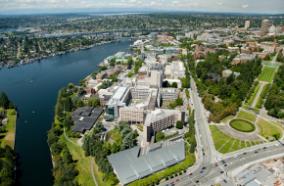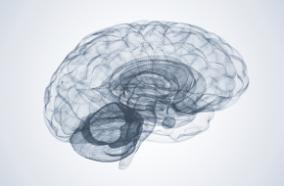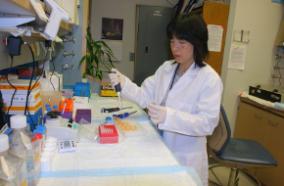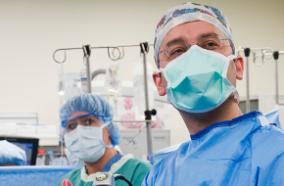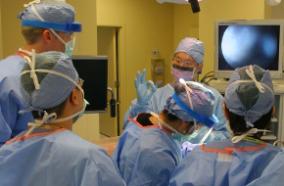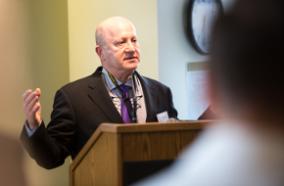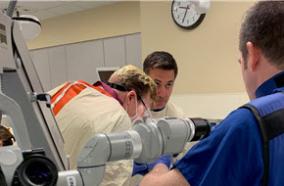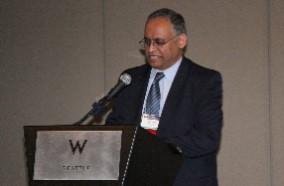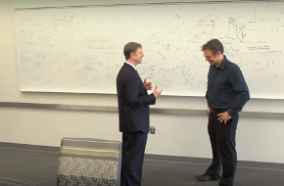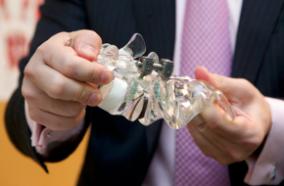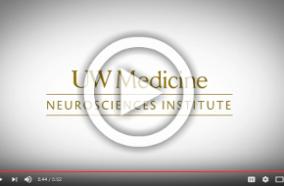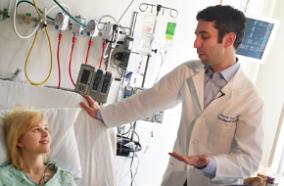UW Neurological Surgery Recent PubMed Publications
The Push, Pull, and Enabling Capacities Necessary for Legume Grain Inclusion into Sustainable Agri-Food Systems and Healthy Diets
Referntial Activity as a Measure of Episodic Memory
Narrativity and Referential Activity Predict Episodic Memory Strength in Autobiographical Memories
Massachusetts Justice Community Opioid Innovation Network (MassJCOIN)
Genetic and Pharmacological Manipulations of Glyoxalase 1 Mediate Ethanol Withdrawal Seizure Susceptibility in Mice
Editorial: Geoffrey Burnstock - An Accidental Pharmacologist
Symptomatic cerebral vasospasm following resection of skull base tumors: Case report and literature review
Management of pelvic organ prolapse of ruptured and extruded bladder from a rare complication of vaginal hysterectomy: a case presentation
Whole blood genome-wide transcriptome profiling and metagenomics next-generation sequencing in young infants with suspected sepsis in a low-and middle-income country: A study protocol
Functional impact of a congenital stationary night blindness type 2 mutation depends on subunit composition of Ca<sub>v</sub>1.4 Ca<sup>2+</sup> channels
Beat-to-beat blood pressure measurement using a cuffless device does not accurately reflect invasive blood pressure
Navigating radial artery loops in neurointerventions
YAP1 and its fusion proteins in cancer initiation, progression and therapeutic resistance.
YAP1 and its fusion proteins in cancer initiation, progression and therapeutic resistance.
Dev Biol. 2021 Jan 08;:
Authors: Szulzewsky F, Holland EC, Vasioukhin V
Abstract
YAP1 is a transcriptional co-activator whose activity is controlled by the Hippo signaling pathway. In addition to important functions in normal tissue homeostasis and regeneration, YAP1 has also prominent functions in cancer initiation, aggressiveness, metastasis, and therapy resistance. In this review we are discussing the molecular functions of YAP1 and its roles in cancer, with a focus on the different mechanisms of de-regulation of YAP1 activity in human cancers, including inactivation of upstream Hippo pathway tumor suppressors, regulation by intersecting pathways, miRNAs, and viral oncogenes. We are also discussing new findings on the function and biology of the recently identified family of YAP1 gene fusions, that constitute a new type of activating mutation of YAP1 and that are the likely oncogenic drivers in several subtypes of human cancers. Lastly, we also discuss different strategies of therapeutic inhibition of YAP1 functions.
PMID: 33428889 [PubMed - as supplied by publisher]
Identification of synergistic and antagonistic actions of environmental pollutants: Bisphenols A, S and F in the presence of DEP, DBP, BADGE and BADGE·2HCl in three component mixtures.
Identification of synergistic and antagonistic actions of environmental pollutants: Bisphenols A, S and F in the presence of DEP, DBP, BADGE and BADGE·2HCl in three component mixtures.
Sci Total Environ. 2021 Jan 04;767:144286
Authors: Jatkowska N, Kudłak B, Lewandowska P, Liu W, Williams MJ, Schiöth HB
Abstract
Ecosystems are facing increased pressure due to the emission of many classes of emerging contaminants. However, very little is known about the interactions of these pollutants, such as bisphenols (BPs), plasticizers or pharmaceuticals. By employing bioluminescent bacteria (Microtox assay), we were able to define interactions between selected emerging pollutants (namely BPA, BPS, BPF, BADGE, BADGE·2HCl, DEP, DBP) in ternary mixtures, at environmentally relevant concentration levels (down to as low as 1.89, 1.42, 3.08, and 0.326 μM for, respectively, BPA, BPF, BPS and BADGE·2HCl). We provide the first systematic analysis of bisphenols and phthalates in three component mixtures. Using this system, we performed toxicity modelling with concentration addition (CA) and independent action (IA) approaches, followed by data interpretation using Model Deviation Ratio (MDR) evaluation. Interestingly, we mathematically and experimentally confirmed a novel synergy between BPA, BADGE and BADGE·2HCl. The synergy of BPA, BADGE and BADGE·2HCl is distinct, with both models suggesting these analytes have a similar mode of action (MOA). Moreover, we unexpectedly found a strong antagonistic impact with DEP, in mixtures containing BPA and BADGE analogues, which is confirmed with both mathematical models. Our study also shows that the impact of BPS and BPF in many mixtures is highly concentration dependent, justifying the necessity to perform mixture studies using wide concentration ranges. Overall, this study demonstrates that bioluminescent bacteria are a relevant model for detecting the synergistic and antagonist actions of environmental pollutants in mixtures, and highlights the importance of analyzing combinations of pollutants in higher order mixtures.
PMID: 33429266 [PubMed - as supplied by publisher]
Exome-wide evaluation of rare coding variants using electronic health records identifies new gene-phenotype associations
Unusual Combined Orbital Roof and Orbital Floor Fractures in A Pediatric Patient
Health economic analyses of the justice community opioid innovation network (JCOIN).
Health economic analyses of the justice community opioid innovation network (JCOIN).
J Subst Abuse Treat. 2021 Jan 05;:108262
Authors: Murphy SM, Laiteerapong N, Pho MT, Ryan D, Montoya I, Shireman TI, Huang E, McCollister KE
Abstract
The Justice Community Opioid Innovation Network (JCOIN) will generate real-world evidence to address the unique needs of people with opioid use disorder (OUD) in justice settings. Evidence regarding the economic value of OUD interventions in justice populations is limited. Moreover, the variation in economic study designs is a barrier to defining specific interventions as broadly cost-effective. The JCOIN Health Economics Analytic Team (HEAT) has worked closely with the Measures Committee to incorporate common economic measures and instruments across JCOIN studies, which will: a) ensure rigorous economic evaluations within each trial; b) enhance comparability of findings across studies; and c) allow for cross-study analyses of trials with similar designs/settings (e.g., pre-reentry MOUD), to assess questions beyond the scope of a single study, while controlling for and evaluating the effect of intervention-, organizational-, and population-level characteristics. We describe shared trial characteristics relevant to the economic evaluations, and discuss potential cross-study economic analyses.
PMID: 33419602 [PubMed - as supplied by publisher]
Tractography-Pathology Correlations in Traumatic Brain Injury: A TRACK-TBI Study.
Tractography-Pathology Correlations in Traumatic Brain Injury: A TRACK-TBI Study.
J Neurotrauma. 2021 Jan 07;:
Authors: Nolan AL, Petersen C, Iacono D, Mac Donald CL, Mukherjee P, van der Kouwe A, Jain S, Stevens A, Diamond B, Wang R, Markowitz AJ, Fischl B, Perl D, Manley GT, Keene CD, Diaz-Arrastia R, Edlow BL
Abstract
Diffusion tractography MRI can infer changes in network connectivity in patients with traumatic brain injury (TBI), but the pathological substrates of disconnected tracts have not been well-defined due to a lack of high-resolution imaging with histopathological validation. We developed an ex vivo MRI protocol to analyze tract terminations at 750 μm isotropic resolution, followed by histopathologic evaluation of white matter pathology, and applied these methods to a 60-year-old man who died 26 days after TBI. Analysis of 74 cerebral hemispheric white matter regions revealed a heterogeneous distribution of tract disruptions. Associated histopathology identified variable white matter injury with patchy deposition of amyloid precursor protein and loss of neurofilament-positive axonal processes, myelin dissolution, astrogliosis, microgliosis, and perivascular hemosiderin-laden macrophages. Multiple linear regression revealed that tract disruption strongly correlated with the density of amyloid precursor protein (APP)-positive axonal swellings and neurofilament loss. Ex vivo diffusion MRI can detect tract disruptions in the human brain that reflect axonal injury.
PMID: 33412995 [PubMed - as supplied by publisher]
Transcutaneous spinal cord stimulation restores hand and arm function after spinal cord injury.
Transcutaneous spinal cord stimulation restores hand and arm function after spinal cord injury.
IEEE Trans Neural Syst Rehabil Eng. 2021 Jan 05;PP:
Authors: Inanici F, Brighton LN, Samejima S, Hofstetter CP, Moritz CT
Abstract
Paralysis of the upper extremity severely restricts independence and quality of life after spinal cord injury. Regaining control of hand and arm movements is the highest treatment priority for people with paralysis, 6-fold higher than restoring walking ability. Nevertheless, current approaches to improve upper extremity function typically do not restore independence. Spinal cord stimulation is an emerging neuromodulation strategy to restore motor function. Recent studies using surgically implanted electrodes demonstrate impressive improvements in voluntary control of standing and stepping. Here we show that transcutaneous electrical stimulation of the spinal cord leads to rapid and sustained recovery of hand and arm function, even after complete paralysis. Notably, the magnitude of these improvements matched or exceeded previously reported results from surgically implanted stimulation. Additionally, muscle spasticity was reduced and autonomic functions including heart rate, thermoregulation, and bladder function improved. Perhaps most striking is that all six participants maintained their gains for at least three to six months beyond stimulation, indicating functional recovery mediated by long-term neuroplasticity. Several participants resumed their hobbies that require fine motor control, such as playing the guitar and oil painting, for the first time in up to 12 years since their injuries. Our findings demonstrate that non-invasive transcutaneous electrical stimulation of the spinal networks restores movement and function of the hands and arm for people with both complete paralysis and long-term spinal cord injury.
PMID: 33400652 [PubMed - as supplied by publisher]


